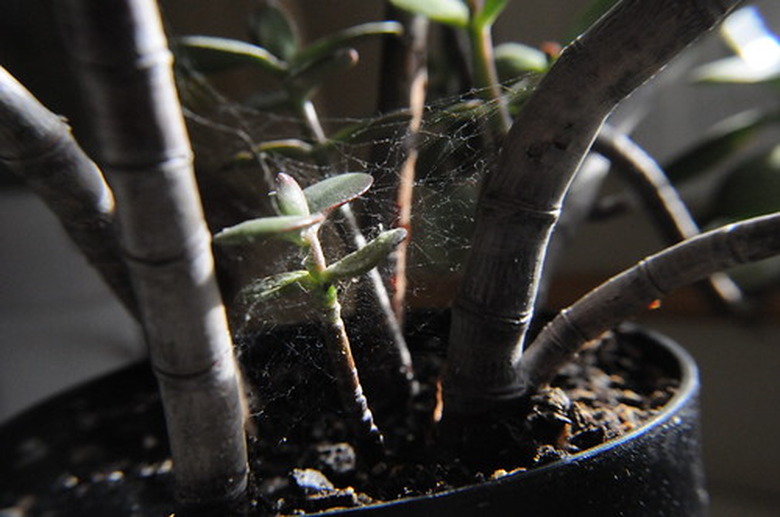Succulent House Plant Identification
Succulent plants are most often seen growing on seacoasts and desserts. The most well known succulent is the cactus plant. They also make ideal house plants and even people who think they can't grow anything can do well growing succulents indoors. There are a variety of succulents suitable for any type of home décor. Besides cacti, some of the most popular succulents used as house plants are jades, aloes and ponytail palms.
Identification
Succulents are soft tender plants that are able to retain water and adapt to dry soil or climate conditions. They have thick fleshy stems and leaves with water storing tissues that serve as reservoirs. They're covered with numerous sharp spines, which are modified leaves or leaf parts. Their leaves are generally light green, although other varieties such as picta, recurvata and variegata have a wide yellow stripe running down the center of a leaf.
- Succulent plants are most often seen growing on seacoasts and desserts.
- They also make ideal house plants and even people who think they can't grow anything can do well growing succulents indoors.
Size
According to Succulents.com there are about 10,000 plant species considered succulents. That's roughly three to four percent of all known plant species. Succulents come in various sizes and shapes. While some plants are only an inch high and resemble rocks, others can be as large as full-size trees. Most succulents grown indoors are small.
Benefits
Because succulents can go for long periods of time without water they make ideal house plants for people who forget to water their plants or have little time to care for them. Families who are often away from home don't need someone to tend to their succulents so they make good houseplants for travelers. These hardy house plants, requiring minimum maintenance, also beautify a home, enhancing its atmosphere.
- According to Succulents.com there are about 10,000 plant species considered succulents.
- Because succulents can go for long periods of time without water they make ideal house plants for people who forget to water their plants or have little time to care for them.
Common Succulent Houseplants
Aloes have short stems and can even be stemless. They have large fleshy green to grayish-green leaves that contain a clear gel. This succulent plant is useful in treating burns and is commonly grown in kitchens.
Jades have thick, swollen leaves and stems. They're known for their beautiful glossy green leaves and for producing lovely pale pink and white flowers. These succulents can grow up to two feet wide and tall, according to Professor House.com.
Ponytail palms aren't palm trees, but have palm characteristics such as palm-like stems. The plant is so named because it resembles a ponytail.
- Aloes have short stems and can even be stemless.
- They have large fleshy green to grayish-green leaves that contain a clear gel.
Succulent Flowers
Most succulents don't produce flowers, but when they do appear they're just as eye-catching as any other flowering plant. Succulent flowers are typically shades of purple or intense ruby in color. Their blooms are larger compared to other flowers with a typical blooming succulent plant being about three or four inches in height with two or three flowers on each stem. Succulent flowers can be about the same size as the parent stock.
Century Plant
The century plant is a succulent that is so-named because of the false idea that it only blooms once every 100 years. In reality it only blooms about every 20 years, according to Cactus Gardening Tips.com. This is due to a plant container not having enough room for the plant. This succulent bears flowers in clusters atop a tall plump stem, giving it an unusual look resembling candelabra. It responds to good treatment when grown in homes, although its growth is hindered in many regions when grown outdoors.
- Most succulents don't produce flowers, but when they do appear they're just as eye-catching as any other flowering plant.
- This succulent bears flowers in clusters atop a tall plump stem, giving it an unusual look resembling candelabra.
